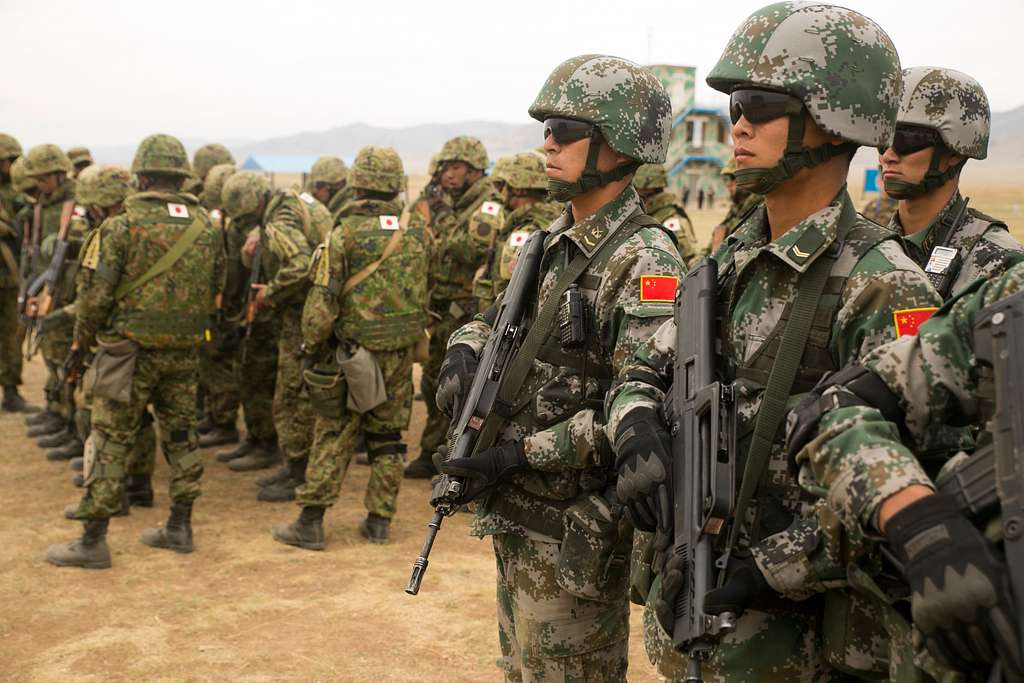Here’s how China reorganizes its armed forces by focusing on cyber and space

China has established the Information Support Force (ISF), initiating the largest restructuring of its armed forces in a decade.
Xi Jinping has launched the largest reorganization of the military in a decade.
On April 19, Beijing launched the Information Support Force (ISF) of the People's Liberation Army (PLA). The Chinese armed forces – People's Liberation Army (PLA) – have "a new system of services and weapons under the guidance and command of the Central Military Commission (Cmc)" announced the Chinese Ministry of Defense. Now, the spokesperson for the Ministry of National Defense of China, Wu Qian, specified, there are four armed forces: Army, Navy, Air Force and Missile Force. There are just as many services: the Aerospace Force, the Cyberspace Force, the Information Support Force and the Joint Logistics Support Force. The Information Support Force is newly established and takes over from the Strategic Support Force (SFF), which commanded the PLA space forces.
As Chinese state media reported, President Xi emphasized that the information support force is a new strategic branch of the military and a key pillar in coordinating the construction and application of the network information system. Control of information is vital to "winning a modern war", declared Xi Jinping.
All the details.
NEW UNITS FOR CYBER AND SPACE OPERATIONS
China has created new independent People's Liberation Army units for cyber, space and cyber operations.
The old Strategic Support Force was dismantled and replaced with three new forces, one of which, the Information Support Force, is responsible for gathering and analyzing information, building communications networks, and protecting vital systems.
EXPERT COMMENTARY
This means that, with the PLA following a strict order of protocol, the Aerospace Force (ASF), which commands the PLA's space forces, is now the senior force, commented Brendan Mulvaney, director of the China Aerospace Studies Institute (Casi ), a Department of the Air Force think tank. Mulvaney notes that the Chinese see the “information domain” as a warfare domain in its own right. This makes it the same as the physical domains of air, land, sea, and space.
A Chinese Singapore Army analyst, Chong Ja Ian, told Breaking Defense that the new move indicates dissatisfaction with the old command and offers a window into Beijing's priorities in preparing for a future battle.
“The rapid creation and disintegration of the SSF, the relatively rapid creation of the ISF, coupled with changes in PLA leadership in recent years indicate continued adjustment in the military. The absence of objections to these changes further underlines [Chinese leader Xi Jinping's] unchallenged position within the party and state establishment,” Chong added.
“First, the focus on information operations highlights the importance that the Chinese Communist Party (CCP) leadership places on such activities. Second, the disintegration of the Strategic Support Force, whose existence was rather short, suggests that CCP leaders are not satisfied with the capabilities and approaches it provided,” said Jong, an associate professor at the University Singapore national team.
THE LARGEST REORGANIZATION OF THE ARMED FORCES IN CHINA SINCE 2015
This move represents the largest reorganization of the People's Liberation Army since 2015, when the SFF was created. That Force was established to consolidate space, cyber, electronic and psychological warfare capabilities under a single umbrella.
The effective removal of the SFF and the introduction of the new ISF suggests a reorganization aimed at improving operational efficiency and integration, according toSpaceNews . By centralizing information operations, including space, the PLA could aim to improve coordination and control over these sectors. The reorganization could also affect China's ability to protect its space assets. As well as how it potentially develops capabilities that could threaten adversaries' space systems.
THE IMPACT ON SPACE FORCES
It is unclear how the ISF will operate and what forces and capabilities it will command.
The move appears to represent a strategic shift toward prioritizing information warfare, which includes cyber operations, electronic warfare and potentially space aspects such as satellite communications and reconnaissance, SpaceNews notes.
Furthermore, the development could impact the command and control mechanisms over its space assets. This could affect satellite operations, space surveillance and other space-related military activities, the American newspaper adds
China has noted and responded to developments surrounding Russia's invasion of Ukraine in February 2022, including the use of Starlink by Ukrainian forces and the role of remote sensing data.
The country has significantly expanded its satellite reconnaissance capabilities in recent years, generating concern among US space forces. Just last week the head of the National Aeronautics and Space Administration, Bill Nelson, warned at a hearing before the US House Committee on Appropriations that Beijing is passing off military efforts in space as civilian projects, reiterating that the US is in a “race” with China to reach the Moon in the 21st century.
This is a machine translation from Italian language of a post published on Start Magazine at the URL https://www.startmag.it/innovazione/ecco-come-la-cina-riorganizza-le-sue-forze-armate-puntando-su-cyber-e-spazio/ on Sun, 28 Apr 2024 05:42:23 +0000.
